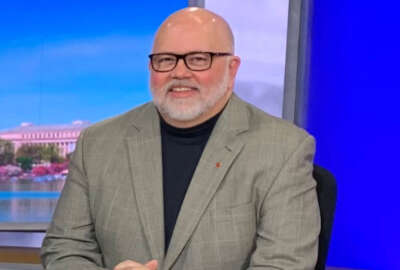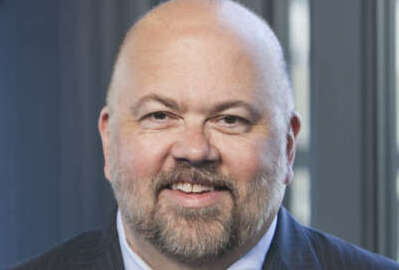
A long-serving and steady voice for public service and performance calls it a day
John Kamensky, after spending 24 years in federal public service, spent another career researching, writing about and pushing for governmental excellence, just...
Best listening experience is on Chrome, Firefox or Safari. Subscribe to Federal Drive’s daily audio interviews on Apple Podcasts or PodcastOne.
Good government, and confidence a big government is capable of good performance, both take a lot of work and commitment. But John Kamensky, after spending 24 years in federal public service, spent another career researching, writing about and pushing for governmental excellence, just retired from his perch as senior fellow at the IBM Center for the Business of Government. He joined Federal Drive with Tom Teminfor more discussion.
Interview transcript:
Tom Temin: John, good to have you on.
John Kamensky: Well, thanks very much, Tom.
Tom Temin: And you are now retired as we speak here. And so given everything we’ve seen in the last couple of years – the political chaos, the spending that seems to pile on debt, evermore, some of the problems with programs that have rolled out as a result of the pandemic -do you still have faith that big government can sometimes get it right?
John Kamensky: Yes, absolutely. And it’s not just big government, it’s government workers being able to get their jobs done.
Tom Temin: Yeah. I mean, my impression through all of this, I guess, maybe having done 8,000 interviews in this particular job in a long career, is that there are so many great people in government that we overlook, and we talk about the federal workforce as a big blob. But it’s really the people that make the difference, isn’t it?
John Kamensky: Absolutely. And one of the things that I’m hoping to do in retirement is to follow through on an initiative I’ve been working on as a team with others, over the past year to improve management quality at the frontline level. There’s been initiatives over the past 20 years that have been largely top down. And this would be something that would be bottom up and it [would] be owned by, for example, senior executives through the Senior Executive Association and others. So I’m really looking forward to continuing to be helpful.
Tom Temin: And when you say “frontline,” what do you mean?
John Kamensky: Well, it’s the, largely the frontline units that are out in the field, because that’s where 85% of the federal workforce is, and they’ve never been really engaged in president’s management agenda, per se. They do all the delivery work and dealing with citizens and challenges out there in the field that a lot of people don’t seem to appreciate.
Tom Temin: And over the past couple of administrations – past few, I would say – we have seen, not so much to call it a trend or a new way of operating – thank the Lord – but we have seen blending of politics into the work that is standing civil workforce types of nonpolitical issues. And I’m not going to name names, name presidents and name programs. But let’s suffice it to say we’ve seen it from both parties. And do you think this is an unfortunate trend? Or is it something that just seems to happen from time to time, and we just have to maintain vigilance?
John Kamensky: Well, I think it’s just something that happens from time to time. And the notion of a nonpolitical workforce is a very powerful fundamental element of our democracy. It’s not just the politics of it.
Tom Temin: Anything else?
John Kamensky: Well, I think that the important thing is that things such as conducting the census and delivering the mail and being able to have nonpartisan drug approvals and research and science are all very important elements of creating trust and faith in the federal government.
Tom Temin: And we’ve also seen toggling back and forth now for several administrations in policy toward the federal workforce. Even within Title 5, there’s a lot of discretion the executive branch has, and – man oh man, have we seen it go from one almost extreme to another almost extreme. Now we’re back again. And is that healthy over the long term and do you see a way to maybe kind of temper out that instinct of a new administration wanting to completely reverse what the other one did, which was a reversal of the one that before that, did, etc. etc. – going back years?
John Kamensky: Well, one of the things that I was a big champion of in reinventing government was creating more frontline authority and flexibility and allow them to be empowered to get their jobs done. And I thought that that was because of central rules, etc. And the last administration gave me pause about that, as to how do you go about doing it. I think that you can empower but you have to be careful of not doing it in such a way that you trash the merit systems principles and protections for civil servants.
Tom Temin: We’re speaking with John Kamensky. He retired just a few days ago as senior fellow at the IBM Center for the Business of Government. And of course, you did work in government for 24 years, you were at the GAO and just remind us the other places.
John Kamensky: Well, I worked at the Government Accountability Office – at the time, it was the General Accounting Office – and worked on the development of what’s now called the Government Performance and Results Act, and then we ended up working for the Clinton-Gore administration’s Reinventing Government initiative in the 1990s. And then from there, I wound up being part of the Office of Management and Budget and became a political appointee after being many years a career. And then at the end of that administration, I needed to leave government and that’s how I wound up at a wonderful perch at the IBM Center for the Business of Government.
Tom Temin: And we’ve almost forgotten about the National Partnership for [Reinventing Government]. That was a signature initiative of the Clinton administration. I think Al Gore led the details there. And you mentioned that discretion we heard about. I think the famous case cited by then Vice President Gore was the ridiculous regulations about procurement of ordinary things. And there was a long page of specifications for an ashtray. Back then the government had ashtrays in the offices still and what it took to become a government-worthy ashtray. And that kind of touched off a lot of thinking about getting away from so much of the lack of discretion for ordinary things. And I also recall the spirit that that touched off in the career federal people – they really liked that. How do we revise that kind of “Yeah, we’re here to really change things for the better?” Can that be revived at this point in history?
John Kamensky: I think so. And with the bold initiatives that President Biden has already undertaken, and what government does, but also how government should do it with the very encouraging support of the importance of the civil service, I think it’s just wonderful, and is a breath of fresh air for civil servants. And I think it’s up to the incoming political appointees to make it real. And I think that there’s a real opportunity with some of the people that have been appointed, I’m just saying, this could be a real shift in trend, and that civil servants can be, I think, very proud, again, of being part of government service and solving big problems.
Tom Temin: And there’s a third element between management or a fourth element. There’s management, there’s the administration, there’s the political appointees, and that is the federal unions. What do you think is the proper role for them, because that’s something else that gets toggled back and forth from a policy standpoint.
John Kamensky: Interesting thing about unions is that they are not necessarily the enemy. I was quite skeptical, going into Reinventing Government, about unions, and then found that they became our allies, and that they were the ones that were bringing issues to us that weren’t micromanagement – they were significant issues that we wouldn’t have been able to learn about otherwise. And they were very supportive with enlightened leadership like John Sturdivant, and Bob Tobias and others, and moving things forward. Because they wanted their employees to be empowered, their members to be empowered to be able to make good decisions that actually help citizens on the front line and not be tied down by micromanaging little roles, and “Mother, may I?” from having to go back to Washington to get small issues resolved.
Tom Temin: Any other people or initiatives from your long career here that stand out in your mind as something to kind of point to, as the great moments?
John Kamensky: One of the things that I found personally gratifying is when I was at GAO working on the development of the Government Performance and Results Act, I wound up visiting other countries that had similar kinds of initiatives. And one of the things that I saw in Australia sparked my imagination. And I don’t know how we would do this in the U.S. government. And then I was recruited to work for Vice President Gore, and I went a-ha! And it was to designate the deputies in each agency as the chief operating officer. So there would be a focal point for it. Now in other countries it was oftentimes a career person and in our case it’s political. And then to convene them as what we’re now calling the President’s Management Council to address issues that reach across agency boundaries. That was never formalized into law. It was always done administratively. And yet for the for past presidents, it’s been kept in place as a valuable tool. And now the role of chief operating officers has now been put into legislation as part of [the] GPRA Modernization Act back in 2010. But the President’s Management Council has always been a personal initiative of each president as a memorandum – not as a statutory requirement. And it’s been something that every administration has found value.
Tom Temin: And speaking of statutory reform, there is been a generalized feeling among members of Congress, at least those that express it among some of the people that watch all of this going on, the development of the federal workforce, that relative to the Civil Service Reform Act back in 1978, it might be time for a relook at authorities, situations, relationships under Title 5. But yet Congress never seems to really muster the – whatever it takes to get something done there. What would you like to see from Congress that could help civil service and help excellence in government as we go forward?
John Kamensky: Well, there was a report that the National Academy for Public Administration released fairly recently that begins to address that. And I think part of it is it doesn’t necessarily require statutory action. There’s a lot of flexibility in existing law that could be taken advantage of, and leadership not just within the Office of Personnel Management, but within each of the agencies working together collaboratively through, for example, the Chief Human Capital Officers Council can get a lot done that furthers the issues that have been raised as concerns by civil service advocates.
Tom Temin: So a lot more federal ashtrays yet to be gone after?
John Kamensky: They will be broken, yes.
Tom Temin: John Kamensky retired a few days ago as senior fellow with the IBM Center for the Business of Government. Thanks so much for joining me.
John Kamensky: And thanks so much for the invitation. I listened to your program every morning as I was driving into work and I may wind up having to listen to recordings of it from now on.
Tom Temin: Well, you can also buy a radio for the house.
John Kamensky: Ah, it’s not the radio – it’s sleeping in.
Tom Temin: All right, well, good. We’ll make sure you get it one way or the other. We’ll post this interview at FederalNewsNetwork.com/federaldrive. Here the Federal Drive on your schedule. Subscribe at Apple Podcasts or wherever you get your shows.
Copyright © 2025 Federal News Network. All rights reserved. This website is not intended for users located within the European Economic Area.
Tom Temin is host of the Federal Drive and has been providing insight on federal technology and management issues for more than 30 years.
Follow @tteminWFED





